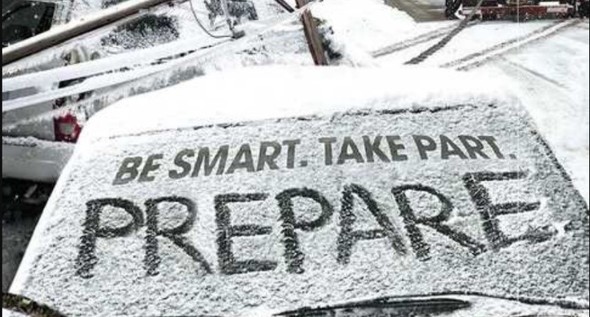|
Exercises help all public and private partners to better prepare for disasters and emergencies. As part of FEMA Strategic Plan, Goal #1, Build a Culture of Preparedness, FEMA is committed to providing partners with exercise design and delivery assistance, tools and resources, enhanced coordination, and the ability to directly influence and inform policy, resource allocation, and preparedness programs.
To learn more information about available exercise design assistance and the benefits of participating in the National Exercise Program, FEMA is hosting 60-minute webinars:
Webinar 1: 1 p.m. Wednesday, Dec. 12
Webinar 2: 1 p.m. Monday, Dec. 17
Webinar 3: 1 p.m. Wednesday, Jan. 9
Webinar 4: 1 p.m. Tuesday, Jan. 15
Via FEMA Teleconference: 1-800-320-4330, Participant passcode: 559550
Via FEMA Adobe Connect: https://fema.connectsolutions.com/nepoverview/. Sign in as a “Guest” and mute your line if not speaking.
The National Exercise Program is a two-year cycle of exercises across the nation that examine and validate capabilities in all preparedness mission areas: Protection, Prevention, Mitigation, Response, and Recovery. As the primary exercise mechanism for measuring preparedness, the National Exercise Program evaluates national readiness, and provides support for exercises that align with the following National Exercise Program 2019-2020 Cycle Principals’ Priorities:
- 1. Operational Coordination and Communications
- 2. Cyber Security
- 3. Stabilization and Restoration of Critical Lifelines
- 4. National Security Emergencies
- 5. Public Health Emergencies
- 6. Community Recovery and Economic Resilience
- 7. Mass Care and Housing
- 8. Continuity
- 9. School Safety and Security
-
For more information or to nominate your exercise to be a part of the upcoming National Exercise Program 2019-2020 Cycle, visit the FEMA website or send an email to nep@fema.dhs.gov.
The Tribal Mitigation Plan Review Guide released last December is effective as of December 5, 2018. The guide is FEMA's official policy on tribal mitigation planning requirements and supersedes the Tribal Multi-Hazard Mitigation Planning Guidance issued in 2010.
The guide’s updates are more streamlined and provides greater clarity regarding FEMA mitigation planning requirements and can facilitate tribal governments' successful development and adoption of mitigation plans. The underlying regulatory requirements for tribal mitigation planning in 44 CFR Part 201 have not changed.
Tribal mitigation plans are community-driven, living documents that tribal governments use to strengthen and protect their land and people from the negative impact of natural events like floods and wildfires. They are a pre-requisite for certain kinds of non-emergency disaster assistance.
For more information on the guide, contact your Regional Tribal Liaison or the Regional Mitigation Planning Lead in your FEMA Region.
Today FEMA released Philip R. Mann’s PrepTalk “Public Works & Emergency Management: Restoring Lifeline Services,” the fourth PrepTalk release from the Sept. 6, 2018 symposium.
Mann is the Public Works Director for Gainesville, Florida. He is the past Chair of the American Public Works Association’s (APWA) Emergency Management Committee and is APWA’s representative to the Public Safety Advisory Committee working on the FirstNet project.
In his PrepTalk, Mann shares a career’s worth of public works experience, including response and recovery from many disasters. Mann explains that the lifelines managed by a public works department are essential to “allow the community to survive” before and after a disaster. These systems include transportation; supporting utilities to restore power and communications; water for homes, businesses, and fire suppression; waste and stormwater management; and solid waste management including debris removal.
Mann's PrepTalk discussion guide, and additional reference materials are available at https://www.fema.gov/preptalks/mann. Additional PrepTalks from the Sept. 6 symposium held in Washington, D.C. will be released in the coming months.
PrepTalks are a partnership between FEMA, the International Association of Emergency Managers, the National Emergency Management Association, the National Homeland Security Consortium, and the Naval Postgraduate School Center for Homeland Defense and Security.
If you use a car to get around and live in an area that experiences winter weather, it’s important to prepare your car for winter. Here’s what you should know if you drive during winter weather:
• Stay off the road during and after a winter storm.
• Install good winter tires. Make sure each tire has enough tread. Check to see if your area requires special chains or studs.
• Keep your gas tank full. A full tank keeps the fuel line from freezing, and it’s also a good idea in case you lose power.
• Build an emergency kit with winter essentials. Include winter clothes, a blanket, and an ice scraper.
For the full list of items to keep in your car emergency kit, visit https://www.ready.gov/car.

|